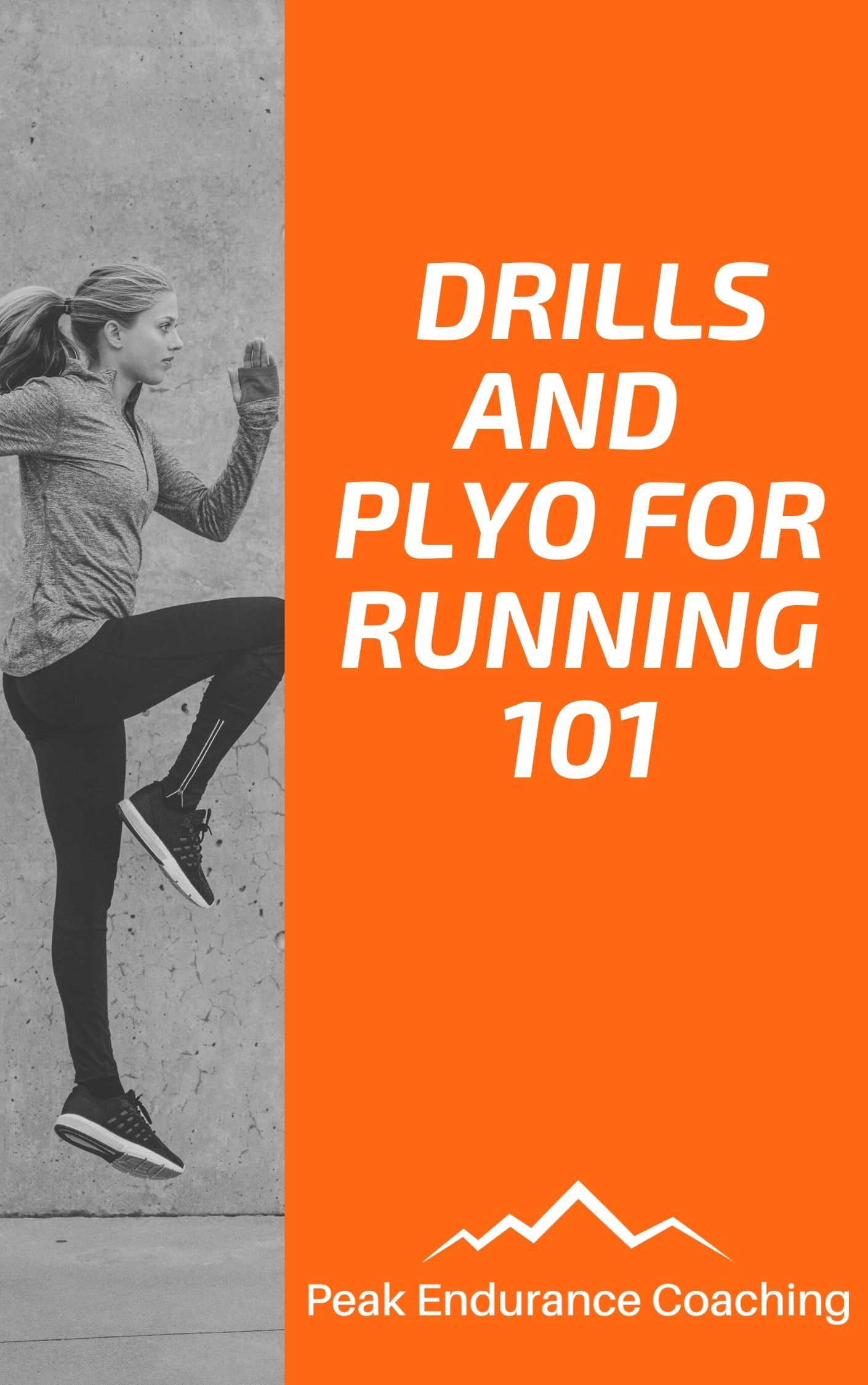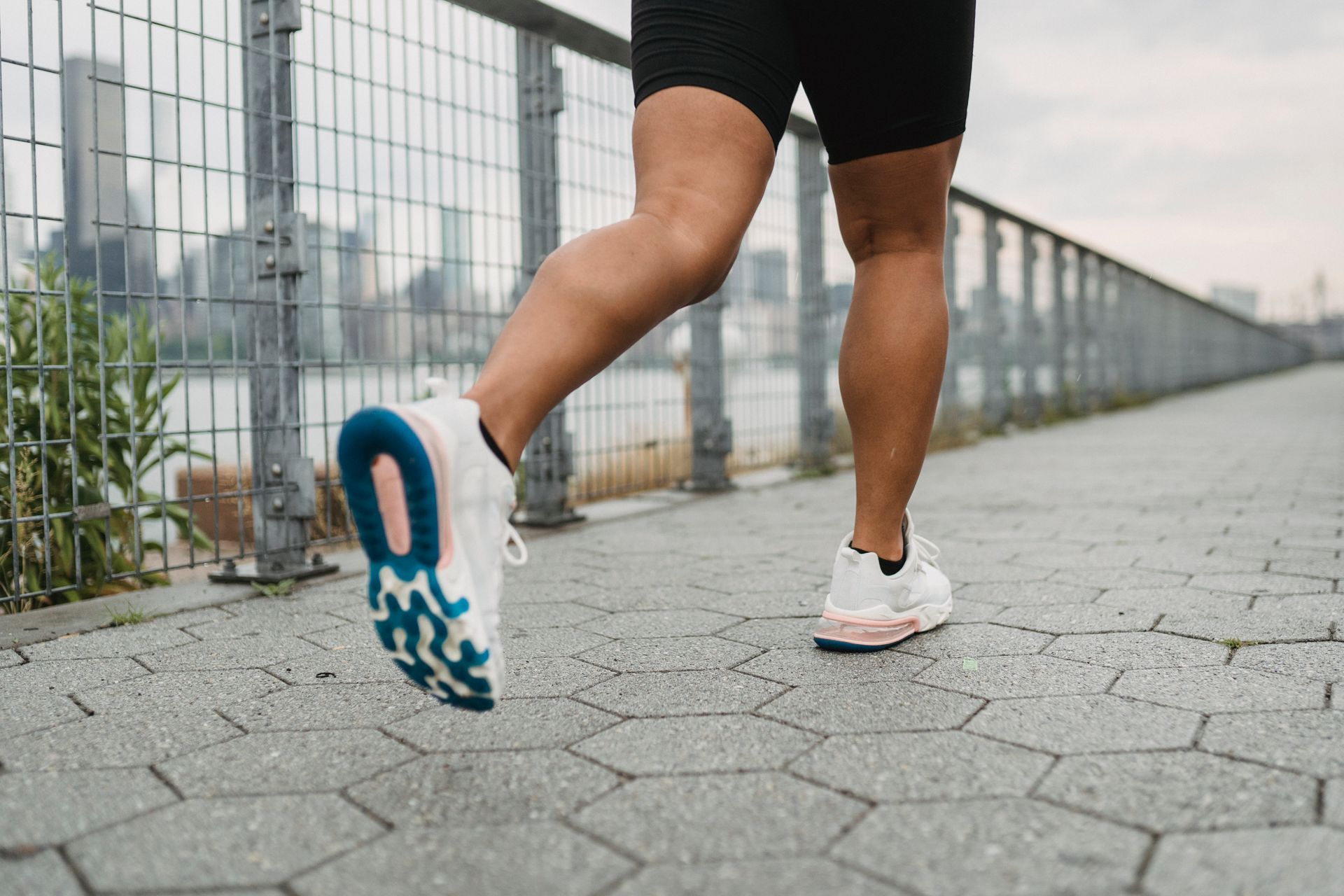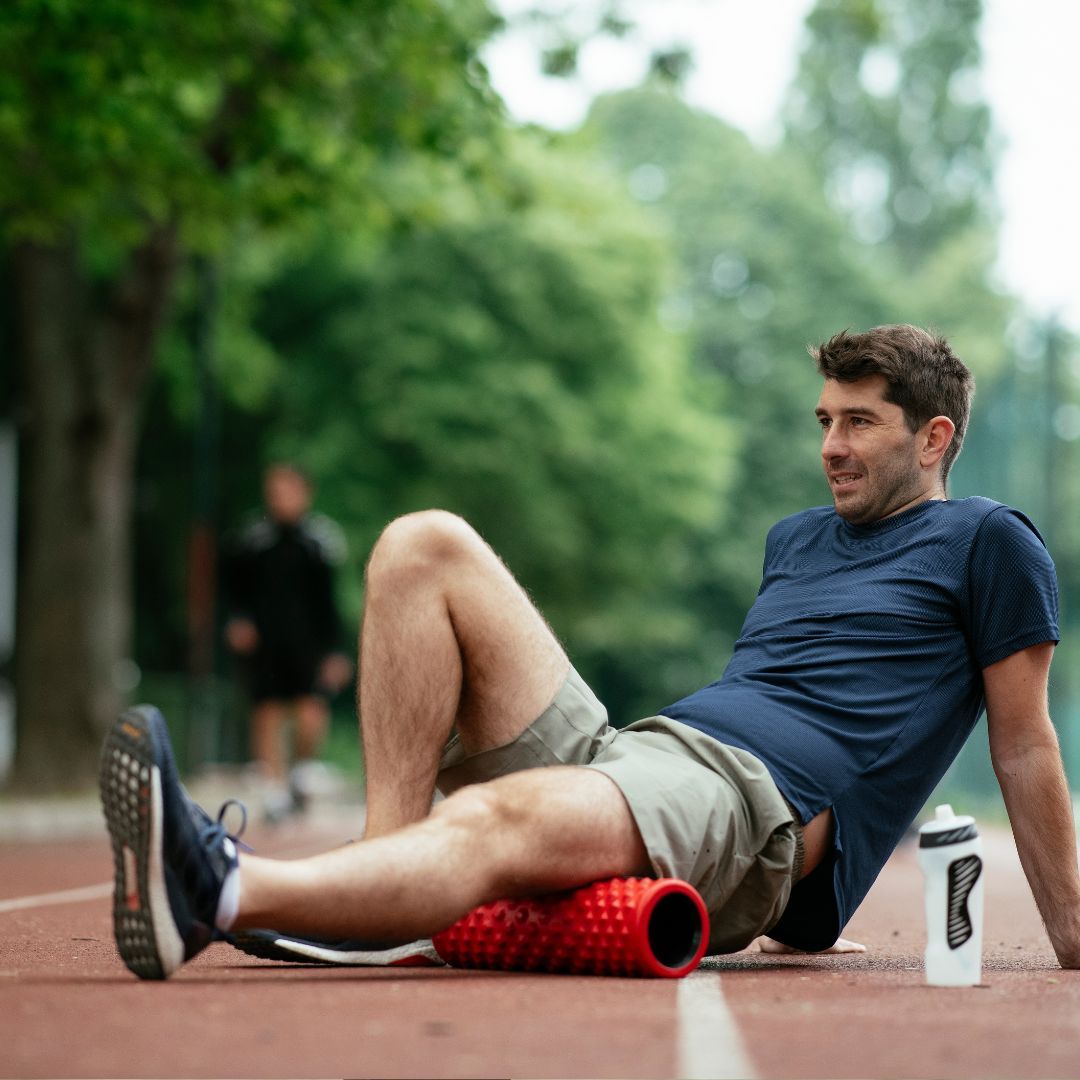Drills Vs Plyometrics
Which should you do, and how should you incorporate them in your program?

Running Drills are dynamic exercises that help to ingrain proper movement patterns into your muscle memory. Once ingrained, these movements become automatic and help to improve a number of things including:
- The strength of your muscles, tendons and joints (like the ankle) needed for powerful and fast running.
- Communication between your brain and legs.
- Coordination.
- Agility.
- Balance.
- Proprioception.
It's a good idea to do running drills at least once or twice a week. You can improve your running a great deal even by doing for instance only 10-minute drills. You can do the drills as an independent workout after a proper warm-up. They’re also great when used as part of a dynamic warm-up before harder workouts and races.
Plyometrics on the other hand are a type of exercise training that uses speed and force of different movements to build muscle power. Plyometrics training can improve your physical performance and ability to do different activities. Plyometric training has been shown to be an important part of training a distance runner to recruit muscle fibres most efficiently. Plyometric drills help increase speed because they make runners’ strides more powerful and efficient.
When your foot strikes the ground, it is exerting force. The more force you have hitting the ground, the further you are going to propel forward and the less time it will take to apply it again and again.
When doing plyometrics:
- focus on form over intensity,
- quality over quantity,
and fully recover in between sets
Plyometrics for runners:
- teach the body to use more of the muscle fibres it has
- in turn make these muscle fibres stronger;
- help these muscles use less oxygen/energy when they do fire;
- and increase the rate at which these muscles turn on. They also
- put stress on the bones and soft tissue, strengthening them and preventing running injuries,
- improve the cardiovascular strength and endurance capacity of the body (VO2 max and running economy),
- Plyometrics for runners also turn tendons into springs allowing the runner’s small amount of stored energy in the muscles to last longer, which is key in longer-duration running events,
·
Ok so basically, drills work on and improve your form, which in turn help you become a more efficient (then hopefully faster) runner, and plyometrics strengthen your bones, tissues and muscles to make you a faster, more resilient runner.
So how do I go about incorporating these into my already jam-packed routine of work, family, running, strength training and stretching I hear you ask?
Well, neither of these take up too much time or should be done for too long. I recommend using drills as part of your run. After a 1-2km warm up you can stop and perform 10 minutes of drills.
Choose three or four drills you want to do.
Most drills should be completed over 20 – 40m. Start with a shorter distance and as you build strength and efficiency (and find your form breaking down slower) increase your distance to the outer limit of that range.
Walk back to where you started before beginning the next drill. Walking back is important to slow the process and ensure you’re not rushing from one drill to the next. Perform 2 – 3 reps of each drill before beginning the next exercise.
Then continue your run. Or you can perform them at the end of the run. I used to do this, and start and finish at an oval so I could do my drills barefoot on the oval. However, there is the chance you may be slightly fatigued by the end of the run so won’t perform the drill as effectively. You can basically perform drills most days. But even then, I wouldn’t do them everyday as we don’t want it to become a chore! I would plan to do them on your easy run days.
Plyometrics take a lot more out of the body and have a greater propensity to cause injury. You can sprinkle a few plyometric exercises into your regular strength training routine—whether that be two or three times a week. This is what I do. Beginners should aim to 1-2 plyometric sessions a week since it is hard on the body. Just like with running, it is important to ease into a plyometric workout to avoid injury. The timing of your plyometric exercises depends on what sort of running and training you are doing.
- Do not do a plyometric workout before a hard or long run day.
- Do not do a plyometric workout right after a hard workout or long run day.
- It is best to perform a plyometric workout after an easy run or several hours after a hard run effort.
I tend to do mine as part of a core workout after an easy run or as part of my general strength training that I do in the afternoon after a morning session.
Make sure you have at least 1-2 minutes FULL rest between exercises. Plyometrics work best when the muscles are fully recovered.
Now, the next question is, which exercises are the best?? I will give you my recommendations. Even if you know some of them, still google them so you can see them executed with correct form.
There are so many different running drills you can do to enhance your technical skills. Here are a few:
1.
Butt Kick Drill: Butt kicks help to improve cadence and improve quadriceps and hip flexor flexibility.
2. A-Skip Drill: A-skip reinforces midfoot landing and helps to improve cadence and coordination.
3. Fast Feet: Fast Feet helps to improve your cadence while emphasising proper foot placement and short ground contact time.
4. High Knees: High knees help to reinforce midfoot landing, improve cadence and hamstring flexibility.
Because running drills are a skill, you need to pay careful attention to the way you perform each drill. If you rush the movement and perform them with poor form, you only reinforce bad habits.
Take your time with each drill and if you find yourself losing form, stop and rest before continuing on with good form. Drills are pointless if you do them with poor form as this is then what you are teaching the body.
Here are the best plyometrics for runners:
- Squat jump: The squat jump gives you power and helps prevent injuries like runner’s knee or IT band syndrome
- Jumping lunge: (also called split squats) This exercise targets all the muscles that are needed while running, strengthening, and improving your performance over time.
- Frog jump: The frog jump move targets your glutes, hamstrings, and quadriceps, all of which are important muscles for runners,
- Pogo jumps: This strengthens all muscle groups and gives your body power and increases the speed of communication between the brain and muscles.
- Hopping on and off a step: This plyometric exercise for runners is great for strengthening your chain of command. (This move can also be done on the ground as a single-leg hop. If you do, mix it up and do up and down, side to side, and forward and back.)
- Skater jumps/hops: This is a lateral exercise that targets all the major muscles in your legs from quads to calves, helping you build balance between your dominant and non-dominant sides.
- Toe taps: This is also known as fast feet (but is different to the drill!!) and adds power to your stride, and even out imbalances.
- Depth jump: trains the body to use the elastic energy from ground contact to produce greater concentric muscular force to propel you forward.
Aim to do 10-16 reps of each move. However, please make sure you start easy with these, you don’t want to cause an injury by doing too much too soon.
So there you have it! Add drills and plyometrics to your routine and see how they work for you! I would love to hear how you go, so comment below or email me once you’ve had a go for a while and let me know! But please be careful!!! I have an eBook on drills and plyometrics that has links to videos of each exercise. Purchase it here for only $4.99. I also have eBooks on stretching and mobility which you can purchase as these are important to focus on too!











